- January 15, 2025
-
-
Loading

Loading
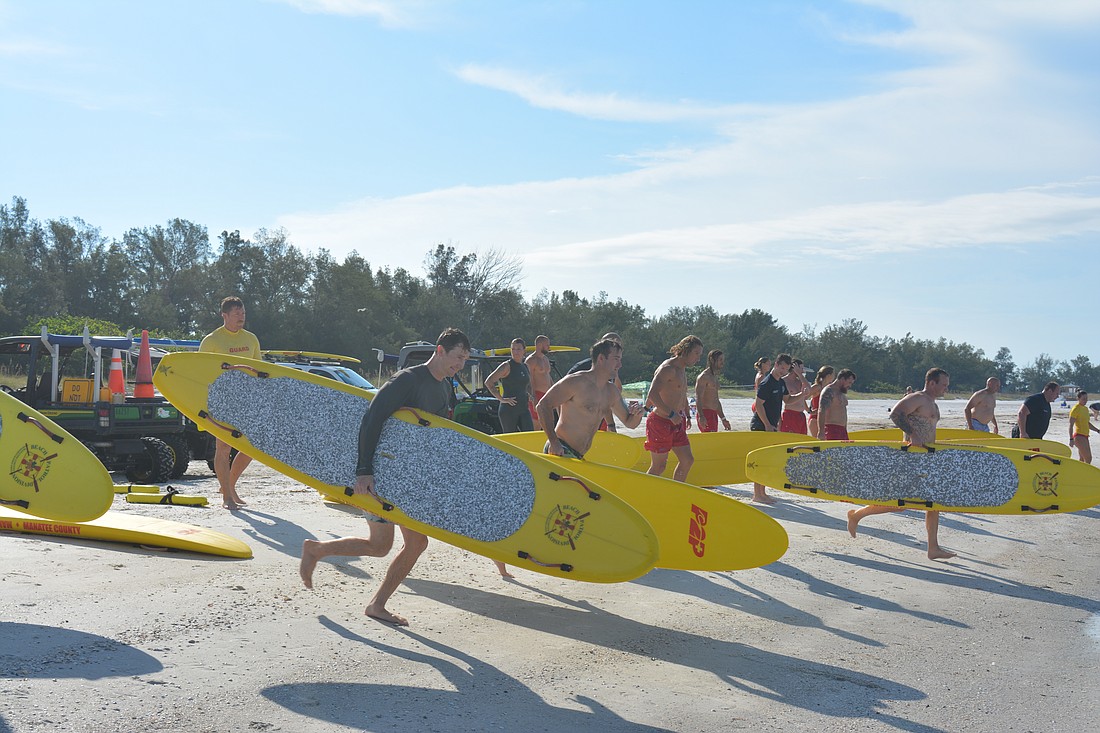
Cue the "Baywatch" theme — without David Hasselhoff, but still complete with some 1980s haircuts and mustaches.
The on-duty shift of Longboat Key firefighter paramedics rolled up to Coquina Beach right before training started at 9 a.m.
Instead of long pants and fire gear, they donned patterned swimming trunks.
Longboat Key Fire Rescue recently received annual water training from Manatee County Beach Patrol, learning proper techniques to rescue swimmers in distress.
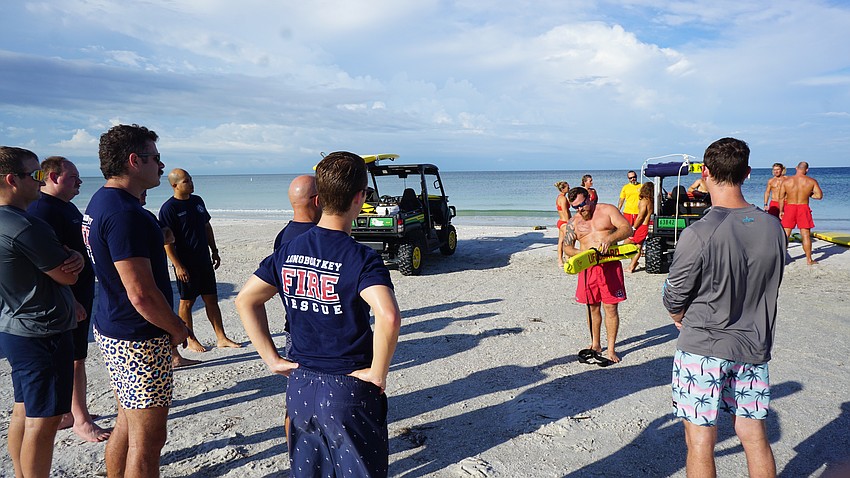
The morning was led by Beach Patrol Captain Marshall Greene, assisted by his beach patrol crew of nearly a dozen.
Training like this is a part of Manatee County beach patrol’s daily routine. The lifeguards arrive at the beach around 8:30 a.m., have training from 9 to 10 a.m., and then man their towers around 10:15 a.m.
But for Longboat Key Fire Rescue, the firefighter paramedics get this refresher course once a year.
The first bit of training was how to use what Greene called a Peterson Belt. When you think of a lifeguard, you can imagine these flotation devices, like a tube the size of a person’s torso, with a strap.
The lifeguards instructed Longboat firefighter paramedics on how to properly deploy the belt, showing them how to throw it and then wrap it back up to be used again.
Then it was time to get in the water.
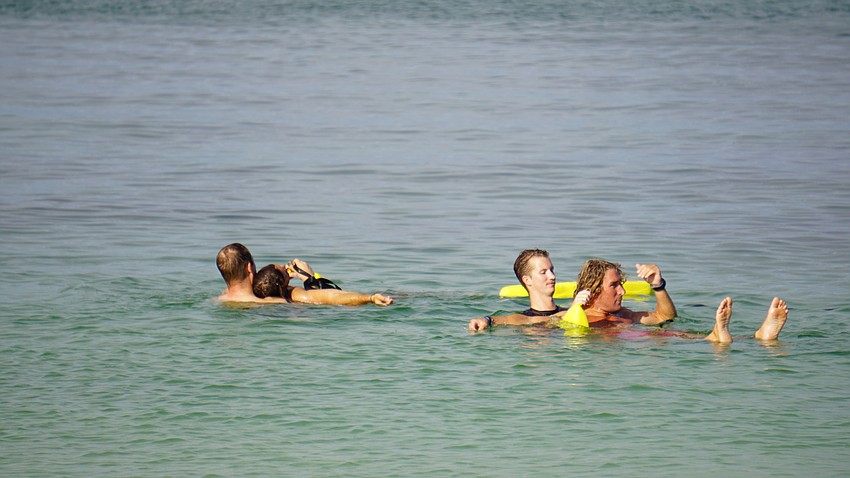
Each of the 10 firefighter paramedics worked with a lifeguard on how to run into the water and quickly swim to a distressed swimmer. The group went over techniques to be used for both conscious and unconscious patients.
After a couple repetitions using the belt, the firefighter paramedics were ready to move onto the boards.
It’s more complicated than just dragging the board into the water. It’s all about momentum.
“That’s our main goal, is just getting out there as fast as we can,” Greene said.
The lifeguards demonstrated with ease the different methods of dragging the board while running, and then sliding the board into the water and hopping on, all in one swift motion.
First the firefighter paramedic had to learn how to put a conscious swimmer on the board. Next was the more difficult task — what to do if the swimmer is unconscious.
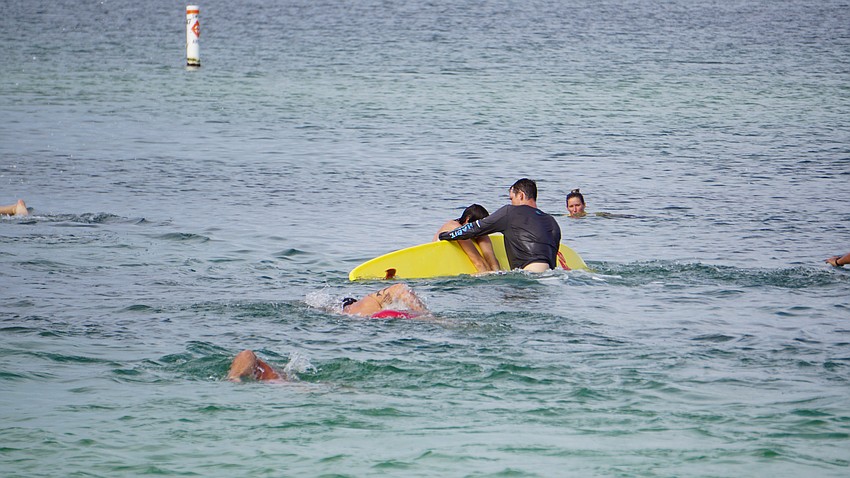
For this technique, the board has to be flipped upside down so the fins are pointed up at the sky. The rescuer then brings the torso of the unconscious swimmer halfway on the board before flipping the board upright. With that, the body of the swimmer eases onto the board.
“You’ll always use a board if you have a lot of people you’re saving at once,” Greene said. “With the Peterson belt, basically you can only rescue one.”
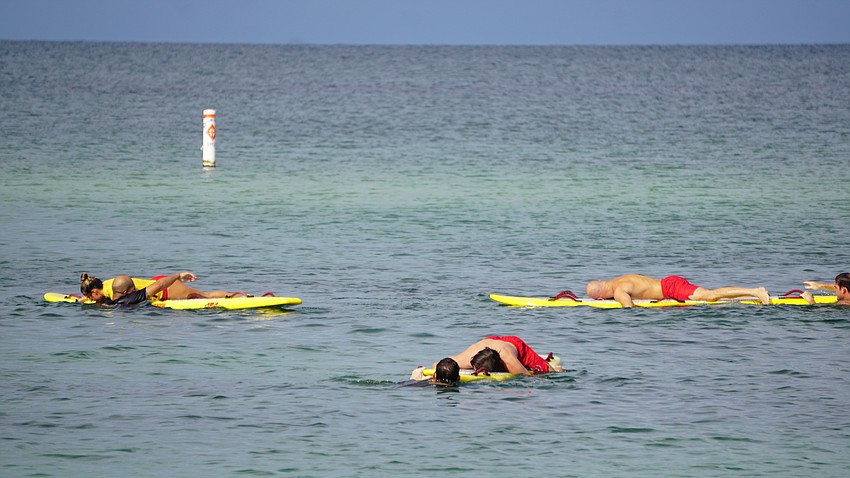
The group got the hang of the technique quickly, and got out of the water. Some of the Longboat Key crew drifted back toward where they put their belongings to keep them dry.
But they weren’t done yet.
The last part of the training was practicing something called “escapes.”
Sometimes, a swimmer in distress panics, grabs onto the rescuer and tries to push themselves up by pushing the rescuer down. This is when it’s necessary to perform an escape — techniques lifeguards use to remove themselves from the situation and let the rescuer calm down for a second.
Longboat Key doesn’t have lifeguards like neighboring beaches in Sarasota or Manatee County. If a water rescue is necessary on the island, it would be up to the fire department to respond.
The crew has its own gear, like a beach vehicle and rescue board, but the annual training is equally important to keep everyone up to speed.
When thinking of “fire rescue,” Longboat Key Fire Rescue Assistant Chief Jentzen Barton said water rescue wouldn’t always be the first thing that comes to mind. But on a barrier island like Longboat Key, it can be part of the job.
“When it comes to water rescue for our organization, we put this service just as high as the other services we provide,” Barton said in an email.
Water rescues are seen as a high-risk, low-frequency situation. While water rescue incidents happen on an infrequent basis according to Barton, each one has the potential to cause significant harm.
“For our firefighter paramedics, we strive to provide a premier service to our community," he said. "And water rescue is no exception.”